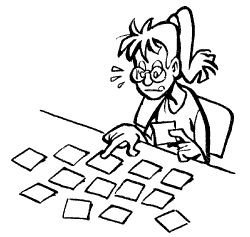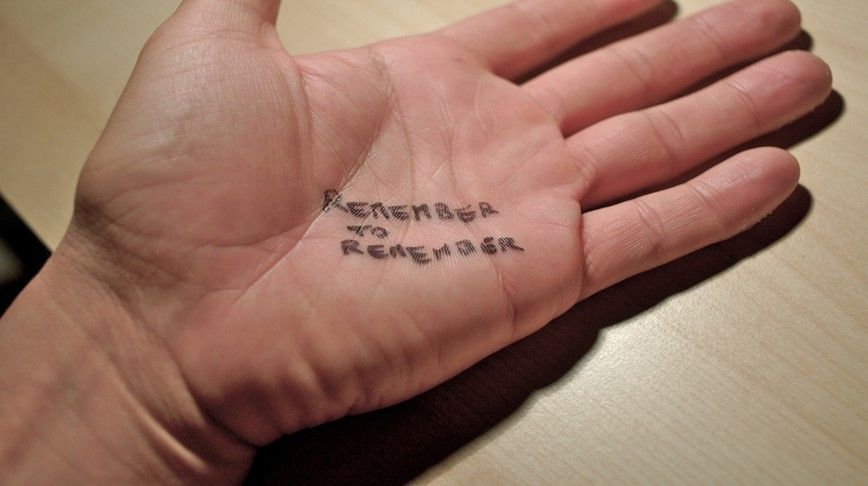So much effort is dedicated to constructing visual displays; from the layout, structure, navigation methods, tools, functions, actions, to the images and logos. All of these elements are important to user experience, but the contents of a display can influence users negatively. Visual clutter can slow users down when they are looking for something specific. And this is not the only way the contents can have an unwanted effect on users.

Author/Copyright holder: Keoni Cabral. Copyright terms and licence: CC BY 2.0
Research suggests that human memory is influenced by time. More specifically, memory is enhanced when information is presented to us at a behaviourally relevant point in time. So, if we are presented with an image that is related to our current task, we are more likely to retain this information in short-term memory. When visual information is provided that is not relevant at that point in time, it is, conversely, less likely to be retained in our memory system.
Lin, Pype, Murray, and Boynton (2010) identified the features of a visual scene that increase its memorability as such (paraphrased and added to):
- Saliency - The relative importance of an element or scene to the viewer/user. The more important something is to us personally, the more likely we are to remember it at a later point. For example, if we have been scouring the internet for a particular item, we are more likely to remember its location or appearance if we come across it during our searching.
- Novelty - Any feature that increases the distinctiveness of an element or scene. When something stands out from all other elements/scenes, we are more likely to recall or recognise it further along. This is also the case for high-level semantic information (i.e. the more something differs from everything else in terms of meaning, the more likely we are to form a strong memory).
- Degree of threat - The more threatening, the more likely we are to remember it. Threat-based images, such as fear-inducing animals (e.g. snakes, spiders, sharks, and your boss), injured people, natural disasters, and warning messages are more likely to create an enduring memory trace.
- Depth of processing - The longer we spend focussing, concentrating, or attending to something, the more likely we are to remember it. When information is processed semantically (i.e. in terms of its meaning(s)) we are thought to form more elaborate memories that are better resistant to forgetting.
- Relevance to behavioural outcome
Lin et al tested the hypothesis that "...there may be a mechanism in which unattended (but not necessarily physically salient, novel, or threatening) information is implicitly encoded at behaviourally relevant points in time". Their findings seemed to support the belief that such a mechanism exists in human memory system, and perhaps even more significantly, this mechanism seems capable of encoding visual information into the memory system regardless of whether we are attending to this information at the point of presentation.
These results are significant not just in psychology, but all human-centred professions. If we retain information better when it is presented at a time where it is relevant to our tasks and actions, it is important to arrange content according to the people's current drives.

Author/Copyright holder: Unknown. Copyright terms and licence: Unknown Img source
Application in Design
It is difficult to predict quite how users will behave, but each action is a cue. Clicking on a menu item lets us know the user is narrowing down their search. Using the help function lets us know they are stuck on a task. Searching for a specific product tells us exactly what the user is looking for. Every action allows us to predict, with some degree of accuracy, what the user needs next. It is our job to make sure that these predictions are as accurate as possible, by researching and understanding the needs and expectations of our users.
It is easy to forget that users do not always follow a neat or prescribed route through a sequence of actions, pages, windows, panels, or any other group of things. They enter websites from various positions when searching from a web browser. They skip steps in a task for a variety of reasons. They abort tasks and start again at different points along the sequence. Designers do not need to keep a pace with users, they have to appreciate that their products need to be flexible to match the flexibility of their users.
In Summary
Much of human memory operates beyond our control. We cannot choose to forget. And we cannot decide exactly what to take in from our visual scene and what to ignore. Information enters the memory system implicitly (i.e. without conscious effort or awareness), and this process can have a considerable effect on our memory for visual scenes. Research suggests that information relevant to our current activities can seep into our memory system and improve recognition. If information on the periphery can influence memory in such a way, there is obvious and significant potential to improve the memorability of all things within our products by increasing the relevancy of information and contents.
Header Image: Author/Copyright holder: Andrea Maria Cannata. Copyright terms and licence: CC BY-NC 2.0











